New Specialized Diverge STR review: Is smoother indeed faster?
We reviewed the new line of Specialized's gravel bikes with front and rear Future Shock

Capable, comfortable steed that's ready to go long, be it at a race or simply to explore. But the extra bells and whistles may not be everyone's cup of tea and the $7,000 to $14,000 buy-in price is preventative for most.
-
+
Unique, hydraulically dampened suspension
-
+
Responsive frame
-
+
Great tire clearance - 700c and 650B compatible
-
+
SWAT storage
-
+
Comfortable ride
-
+
confidence-inspiring handling
-
+
Great component packages
- +
-
-
Expensive, even at the entry level
-
-
The fit and ride feel takes some time to set up
-
-
Suspension isn't for everyone
You can trust Cycling Weekly.

"100mm more travel and I can do away with my mountain bike!" I joked to my fellow bike journalists upon seeing the new Specialized Diverge STR.
Following the trend of turning gravel bikes into increasingly more capable, suspended steeds, the all-new Specialized Diverge has gotten a major make-over! The Diverge STR — unveiled today— now features both front and rear Future Shock suspension.
With 20mm of spring-loaded suspension in the front and 30mm of hydraulically dampened rear-end compliance, Specialized is taking its "Smoother is Faster" approach to yet another level.
Sounds good on paper, but how does it ride?
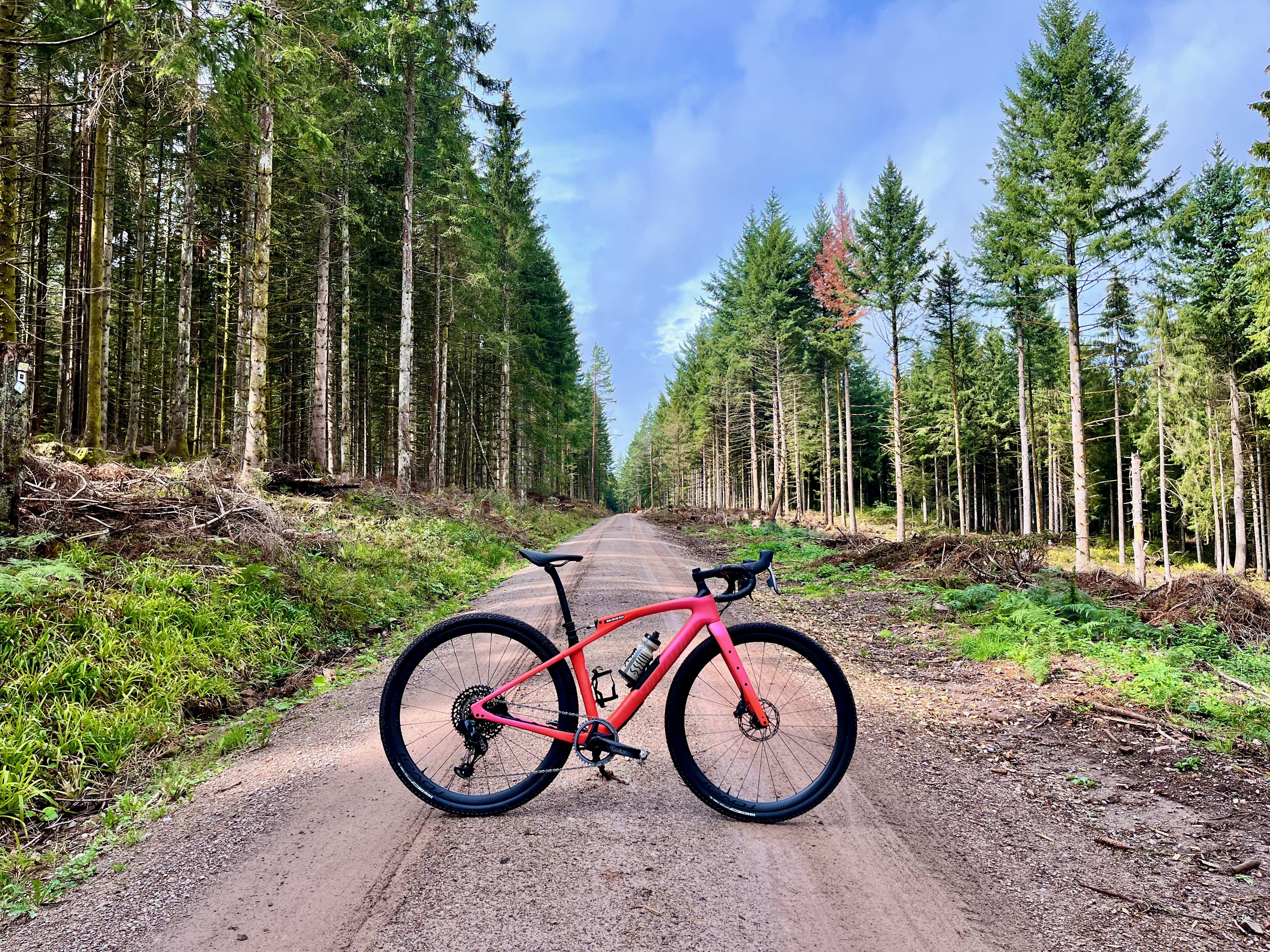
A full suspension gravel bike?
Stealing the show of the fourth-generation Diverge gravel bike is the all-new rear Future Shock meant to further isolate the rider from rough roads and balance out the bike.
Years in the making, the engineers at Specialized realized that while the front-end Future Shock did a great job isolating riders from the bumpy surface below, the bike no longer felt balanced.
The flexible rear with its dropped seat post clamp and seat post deflection does achieve a good amount of rear-end compliance, but it reached its limits with the increasingly rough terrain common in today's events.
To find a solution, the engineering team initially turned to the company's rich history in mountain biking, but suspension technology derived from the off-road disciplines didn't quite fit the bill. Engineers instead turned to suspension seat posts — systems that sit above bike and isolating the rider from the rough roads below without changing the rider's saddle height or location in space.
“We understood that suspension seatpost, that have the action on the top, have a lot of positive things, but a lot of drawbacks too. They don't have a dampener, they have high weight, they're not very good to look at, and they're mostly an add-on, right? But we liked the positives of it,” Specialized engineer Chris D'Aluisio said.
And so the wheels in D’Aluisio’s head started turning, creating some rather wild looking prototypes. You can see these prototypes and read about the process in depth in our launch story, but in the interest of this review, we're going to skip ahead several hundred prototypes and years of work to what you can see and feel in the rear Future Shock as it exists today, and the bike that's built up around it.
Rear Future Shock 'suspension'
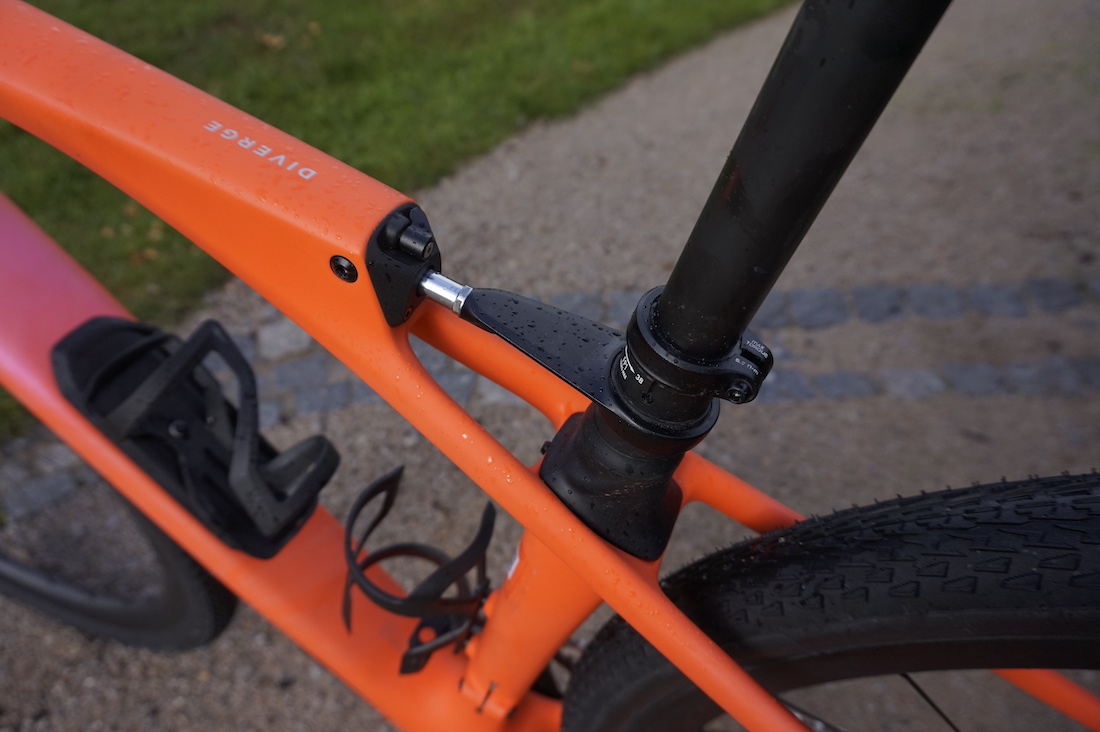
What it is:
In layman terms, the hero of the rear Future Shock is a composite frame post that sits inside the seat tube. This frame post has the ability to move back and forth, effectively moving the saddle 30mm back and downward along the seat tube axis.
Specialized reasons that when the rear wheel encounters a bump, the wheel moves up. The frame post works as a spring, moving backwards and down in response. Its direction of travel is equal and opposite to the wheel’s path.
An air shock dampener in the top tube is attached to the frame post by a sturdy aluminum piece called the tendon. The dampener controls the movement of the frame post backwards and forwards, giving the rider a smooth ride in the saddle while maintaining the same saddle height and position in space.
Weight and serviceability
Specialized claims that the whole system only weighs just under 400g more than the current S-Works Diverge frameset.
A painted 56cm Diverge STR frame with no hardware weighs 1100g. A a complete 56cm S-Works Diverge STR has a claimed weight of 18.7lbs (8.5kg) set up tubeless out of the box. Pro and Expert models come in at 19.6 lbs (8.9kg) and 20.9lbs (9.5kg), respectively.
The frame post itself is said to have an “infinite lifespan” and the whole system in general is protected from the usual gravel grime and should last a long time. The dampener piece will wear out over time, however, and like a chain or cassette will need to be replaced. It does, however, come with a two-year warranty and service period.
The 4th Gen Diverge

Billed as the “most capable” gravel bike Specialized has ever made, the Diverge STR sports a super 1100 gram FACT 11r carbon frameset, the existing Future Shock 2.0 in the front and the new rear Future Shock, and has clearance for 650b x 2.1” or 700c x 47mm tires. All builds come with a 1x SRAM drivetrain with a 10-50 cassette, 42mm tubeless Tracer Pro tires, eyelets for mounting gear and the internal SWAT™ compartment we’ve come to appreciate about the current Diverge.
For the really rowdy riders, the Diverge STR is also dropper post compatible and sports a standard 27.2mm seatpost diameter.
Geometry-wise, bike sizing remains consistent among the Diverge line.
Replacing the upper tiers of the current, front suspension-only Diverge line, the Diverge STR collection consists of the S-Works Diverge STR, Diverge STR Pro and Diverge STR Expert.
The entry point for the full suspension riding experience will set you back $7,500 USD (€9,500 / £7500) while the top-end S-Works version retails at a head-turning $14,000 (€15,000 / £13,000).
The Expert comes equipped with a SRAM Rival eTap AXS Eagle groupset, Roval Terra C wheels, alloy handlebars, an S-Works carbon seatpost and the Power Expert saddle.
The middle-of-the-road Diverge STR Pro —retailing at $9,500 USD (€9,500 / £9000) — is powered by a SRAM Force eTap AXS Eagle groupset, Roval Terra CL wheels, Terra carbon handlebars, an S-Works carbon seatpost and Power Pro saddle.
The S-Works build includes a SRAM Red eTap AXS Eagle groupset and a Quarq power meter, Roval Terra CLX II wheels, Terra carbon bars, an S-Works carbon seatpost and the S-Works Power with Mirror saddle.
A frame-only buying option is available for U.S. customers only, which comes woth a price tag of $6,000 for the FACT 11r carbon frameset with front and rear Future Shocks, a seat post, seat collar and the SWAT system.
Fine tuning your ride
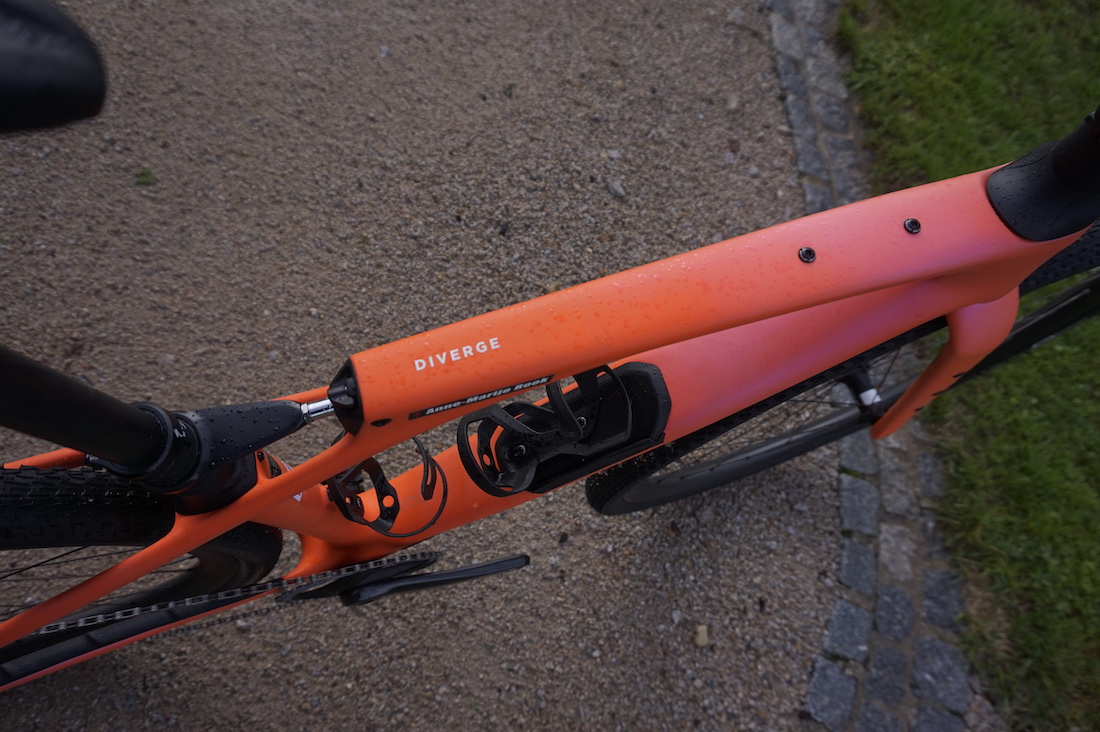
Finding your fit and ideal ride feel is a little different on the STR than any other gravel or road bike before it, and Specialized does recommend getting a bike fit if you haven't had one yet (or in recent years).
First, there's the geometry.
While the bike sizing remains consistent among the Diverge line, there are a few minor differences that separate the STR models from others: the BB Drop is slightly higher, the chainstays are minimally longer and the seat tube angle is ~0.5 degrees steeper to compensate for sag in the STR system.
All changes are minor, but Specialized does recommend adjusting your static saddle position 5 to 10mm forward and slightly angled down from your normal position. With this setup, your sagged riding position should be consistent with a rigid bike.
For whatever reason, I struggled to find a good fit. The stack height is simply too tall for my liking and the Hover riser bars don't help there. I seem to find myself between two frame sizes and spent a lot of time fussing with my position — while not the easiest on the front Future Shock system, it was mostly just a matter of swapping stems and removing any spacers.
And then there's the fine tuning of the rear-end compliance and ride feel.
If you come from a road background, fine tuning your suspension will be a new concept. Luckily, Specialized made it fairly easy but be prepared to spend some time playing with your setup for the first couple rides until you find a ride feel you prefer.
To account for all the frame sizes and a variety of rider weights, Specialized has produced nine different frame posts, each with a different carbon layup for varying stiffness. Each bike frame size comes with two different frame posts and each post in turn has a stiffer and more flexible side, tunable to the rider’s preference.
Once you’ve chosen your preferred frame post, switching between the soft and stiff side of a post can be done on the fly. You simply loosen the bolt below the seatpost clamp, turn your frame post 90 degrees, re-tighten the bolt, adjust your saddle and go. If neither frame post suits your needs, additional posts can be obtained through a Specialized dealer.
Making adjustments to the dampener is even easier. There's a small lever on the top tube that provides three levels of compression damping that you can toggle between while riding. It's not recommended that you mess with the rebound speed too much, but it can be adjusted with a hex key through a hole in the base of the top tube.
Should you choose to take this bike on a loaded bikepacking excursion, you'll want to revisit your frame stiffness to account for the added weight to the seatpost.
Ride Impressions

North American Editor Anne-Marije Rook test riding the all-new Specialized Diverge STR
Gravel continues to be a such fascinating category for bike manufacturers. On one end, you've got companies like Ridley, 3T, Cervelo and Scott with their speed-first, aerodynamic race steeds that stay true to their road origins. While on the other end of the spectrum you've got the the outrageously slack Evil Hagar or the likes of Lauf, Niner and Cannondale who've gone all in on suspension.
Specialized serves both ends with the featherweight and rigid Crux — originally a pure cyclocross race breed that can now fit a 47mm tire— and the capable Diverge. Both bikes have a race pedigree yet sit at the opposite ends.
I'll admit that I was skeptical of suspension on road and gravel bikes initially, and it took me a while to come around on the Future Shock — being able to adjust and lockout the suspension on the fly made a big difference for me.
I did come around eventually though (along with wider tires), and have come to quite like the previous Diverge thanks to its lightweight and responsive frame, ingenious SWAT system and improved Future Shock 2.0. The fact that it has mounting eyelets, and can be used for racing and bikepacking alike is a big plus in book as well. (And luckily these things are carried over into the new Diverge STR!)
Having ridden several aftermarket suspension products, I was certainly intrigued by Specialized's integrated approach. And for this review, I had the rare pleasure of test-riding all three models of the STR line, so I could get a good feel of the frame and Future Shock, no matter the components.
I rode the top-end S-Works and the beautiful "Satin Blaze" Pro model in September on some rather wet rides through Germany's Black Forest. The Expert I rode on my home gravel roads in Oregon.
My first ride was spent on the Pro model and was meant to get an initial feel for the bike as a whole. How did it ride? - smoothly. Is the suspension going to bob on an out-of-saddle climb? - Nope. Can it carve corners, descend confidently and respond to surges? - Check, check and check.
Fit fussing aside, the bike's first impression was one of smoothness. The stable descending and slip-free climbing particularly stood out to me. With the suspension absorbing the bumps instead of your body, I found that the bike stayed planted and so did I. After decades of bike riding, getting out of the saddle to respond to and absorb bumps or tricky terrain is almost second nature. It's a subconscious reaction. To a certain extend, suspension removes that need or at the least, it allows you to stay seated more often and over more terrain, which in turn means you get more traction. On climbs, this meant less slipping of the tires. On the descends, this translated to confidence on the at-times loose terrain and new-to-me roads.
Staying seated also allows you to continue putting out the power. When the dark clouds rolled in and the rain came pummeling down on that initial ride, the bikes responded well to the change in pace as we sped toward cover.

The Specialized Diverge STR Expert
My subsequent rides were spent paying closer attention to what the bike, and the dual Future Shocks specifically, were doing. I soon realized that the movement of the frame post is actually quite noticeable, especially when seated toward the back of your saddle. While the front future shock underneath your hands and arms moves up and down, you saddle moves back and down. The slight motion isn't off-putting per se, it's just new and takes some getting used to.
For me, the suspension shone on the rougher descends. Even on the uneven, wet terrain, the wheels stayed safely planted, allowing me to push the speed and corner with confidence.
On the familiar roads at home, the bike felt capable and, for a lack of a better word, cruise-y.
I like the rowdier, more mountain bikey side of gravel and this bike Is certainly ready for it. With a little bit of dampening to take the sting out of the rougher roads and help you stay in control, and room for 650b x 2.1” or 700c x 47mm tires, there are few trails this bike won't be able to handle.
On those more traditional gravel roads that seem to go on for ever, the suspension will help you ride longer and go farther. The dual Future Shocks do a good job absorbing the vibrations, and turning a jarring ride into a comfortable cruise. After a long day in the saddle, the rough terrain has less of an impact on the lower back and arms, which means fever aches and generally a more joyful ride.
And without being bounced around so much, you're able to maintain sustained efforts, or simply pedal, for longer. More often than not, I found myself simply cruising along in comfort
This, Specialized argues, is what ultimately makes you faster in the long run, and why Ian Boswell will be choosing the STR as his weapon of choice for the 200-mile Unbound next year.
But as much as this idea that smoother is faster makes sense to me, I didn't really feel very fast. That is to say, I miss a bit of the snappiness and liveliness of a pure race breed like the Crux or even a previous Diverge. By dampening the roads, I'm afraid the playfulness has been dampened a bit as well. This becomes even more apparent as the spec gets slightly heavier down the collection line.
So perhaps, this is what differentiates Specialized's gravel offerings. A gravel bike model for either end of the gravel riding spectrum: The quick accelerations and liveliness of the Crux vs. the compliance and capability of the Diverge.
And here I thought gravel riding would allow me to downsize my quiver!
Future Shock aside, the Diverge STR is spec'd with Specialized's and SRAM's best and proven offerings. The 10-50 cassette provides all the gearing one could want, the carbon components are light and responsive, and I continue to appreciate the Diverge's SWAT system in the down tube and the ability to run just about any gravel tire size of choice. I'm not a big fan of the Hover riser bars, but that's a personal preference. The stack height combined with the front-end Future Shock is already a tad high for my liking, so the rider bars make for too upright of a position for me.
Value
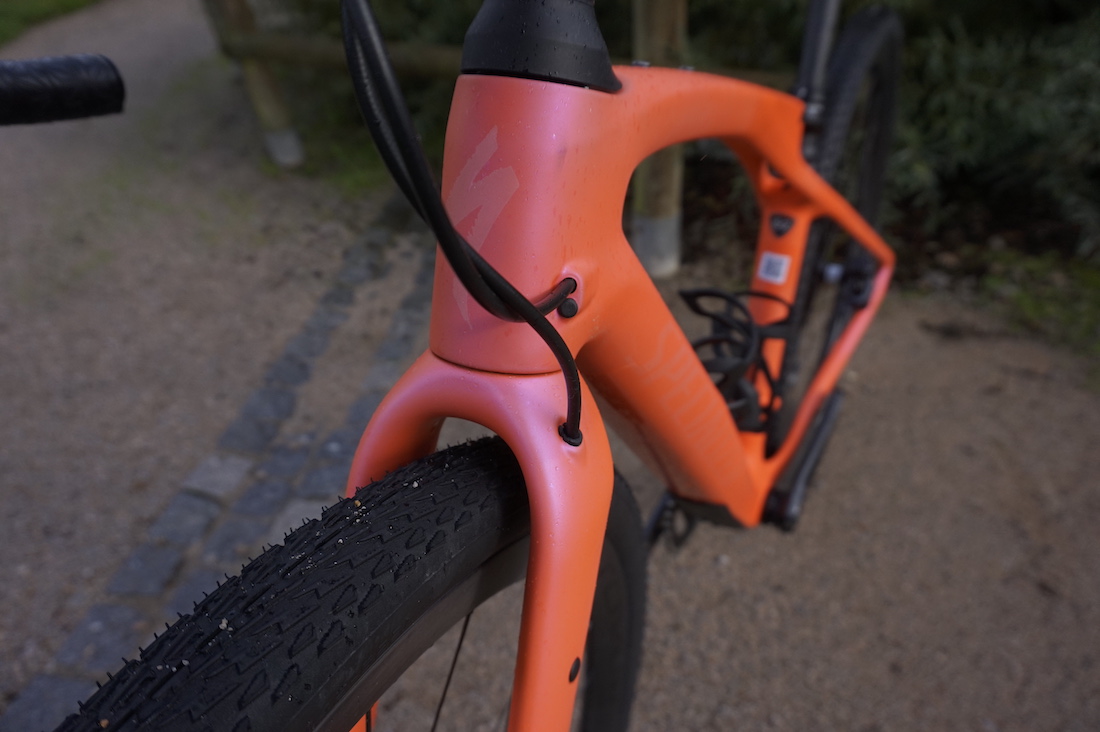

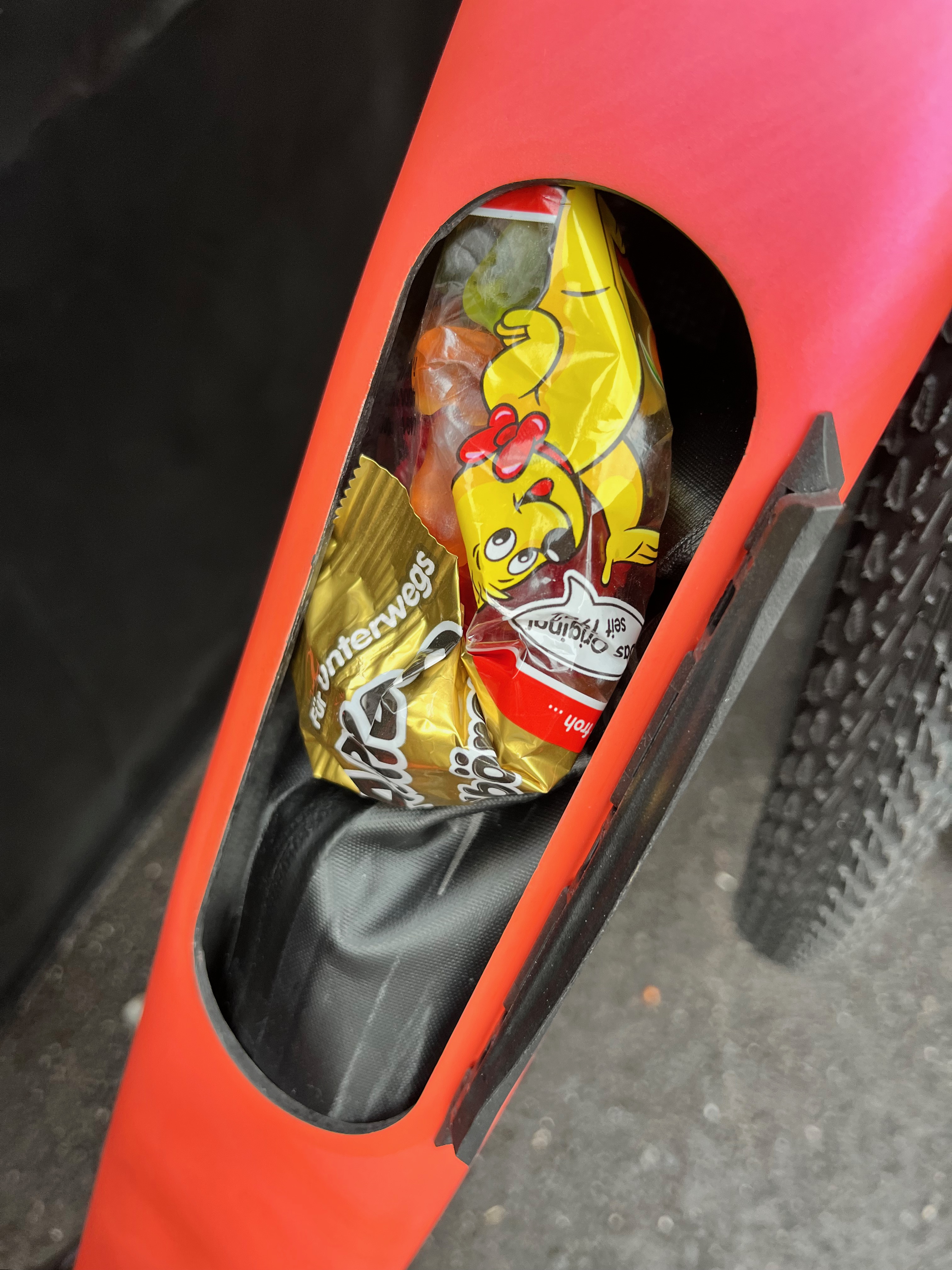


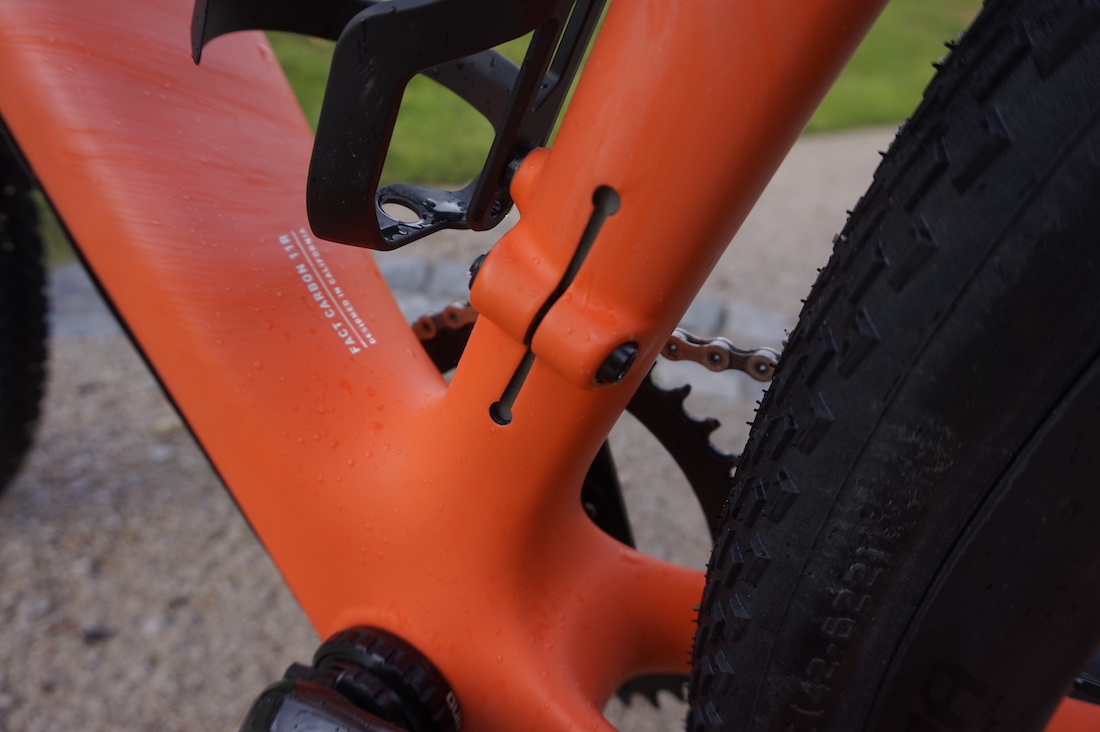
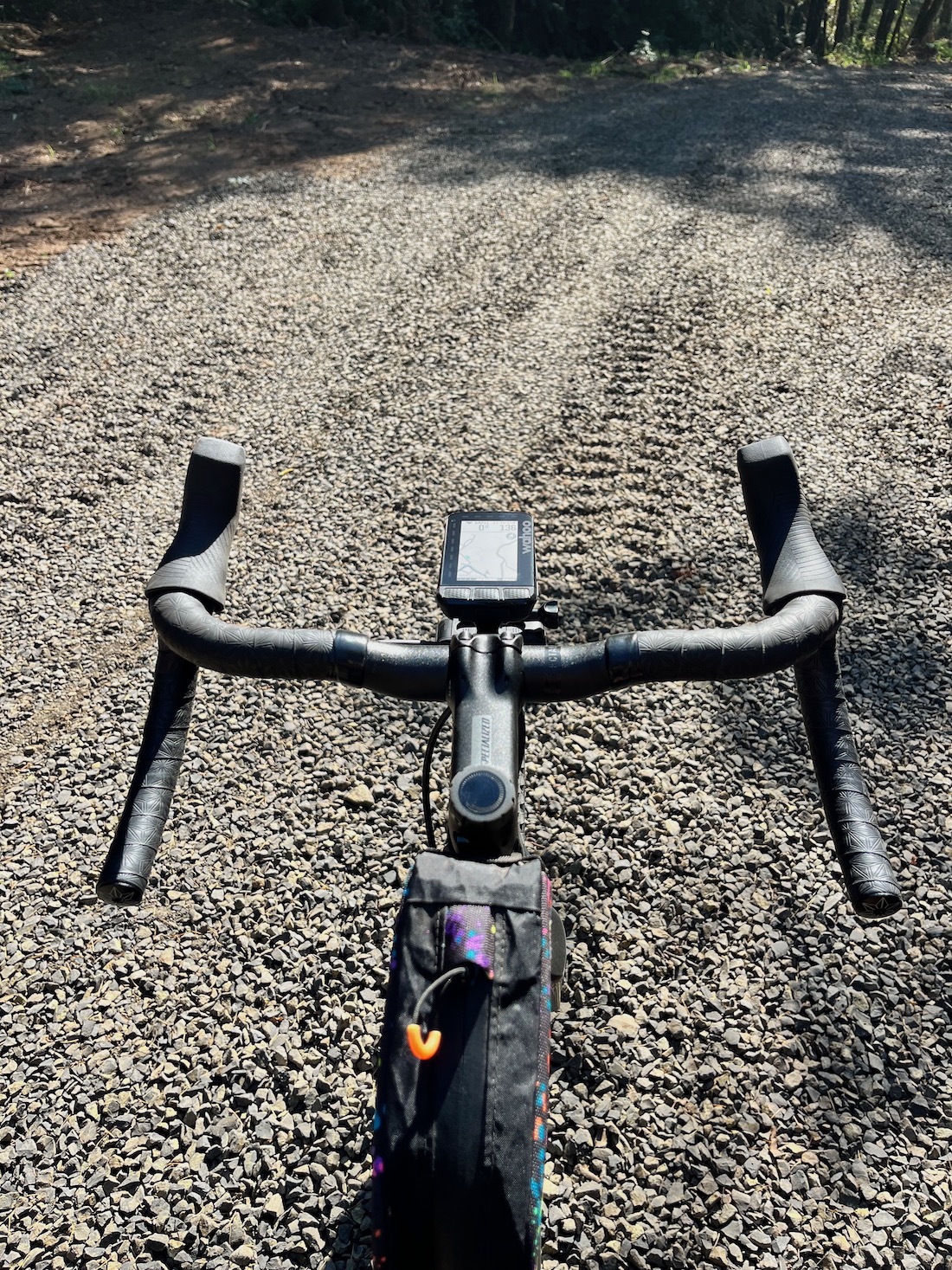
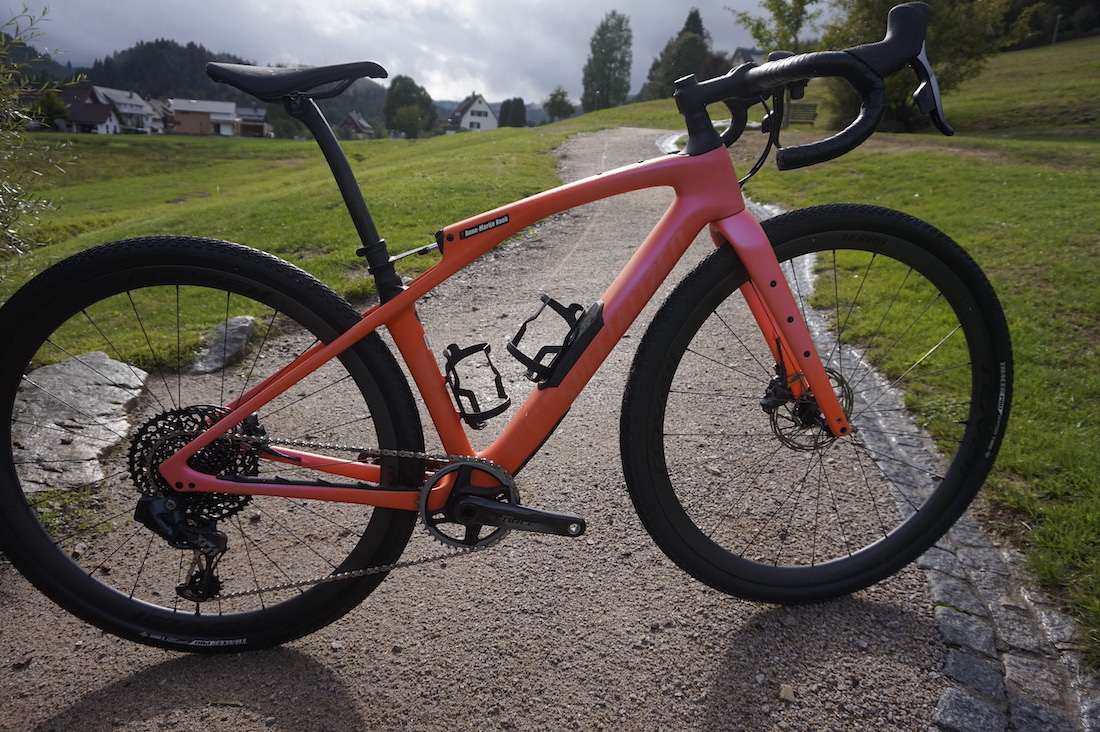
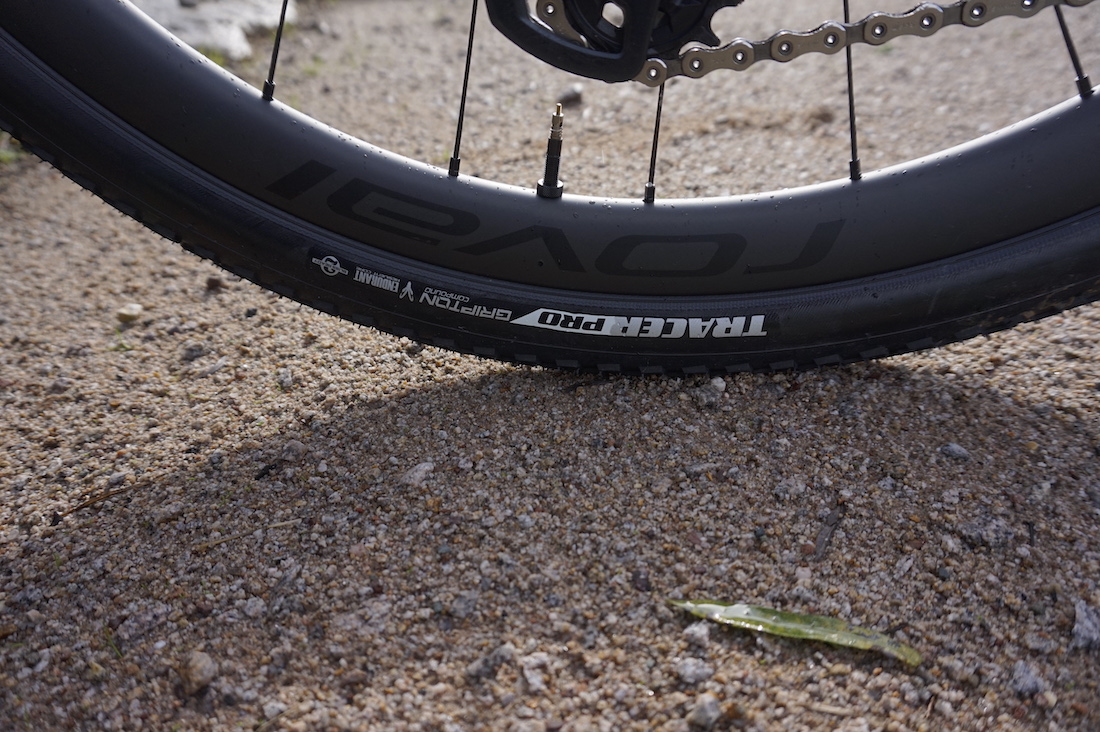
If the rear Future Shock was the first head turner of the Diverge STR, then the price tag is a close second.
At a staggering $14,000, the S-Works Diverge STR is $3,400 more expensive than its front-suspension-only predecessor and among the most expensive Specialized rollouts we've seen in the brand's road and gravel category yet.
Even the entry-point of $7,000 is pretty preventative, and many will have to wait for the technology to trickle down a bit further before being able to experience the dual Future Shock.
Are the extra bells and whistles worth it when you can buy an aftermarket suspension seatpost like the Redshift for $230? I guess that comes down to the individual.
With that said, I did price out the S-Works model spec by spec. And MSRP prices being what they are, I discovered that if you were to buy the Diverge STR frameset and build it up yourself with the same components as offered in the S-Works model, you'd still spend around $13,100. While $14K remains a hard-to-justify amount to spend on any bicycle, doing this bit of research does provide some perspective on how the price tag got to be so high.

Verdict
The Specialized Diverge STR is a capable, comfortable steed that's ready to go long, be it at a race or simply to explore. The rear Future Shock is effective. It adds not only comfort but also stability, traction and confidence to an already very capable bike.
But the extra bells and whistles may not be everyone's cup of tea and the $7,000 to $14,000 buy-in price is preventative for most.

Thank you for reading 20 articles this month* Join now for unlimited access
Enjoy your first month for just £1 / $1 / €1
*Read 5 free articles per month without a subscription

Join now for unlimited access
Try first month for just £1 / $1 / €1
Get The Leadout Newsletter
The latest race content, interviews, features, reviews and expert buying guides, direct to your inbox!

Cycling Weekly's North American Editor, Anne-Marije Rook is old school. She holds a degree in journalism and started out as a newspaper reporter — in print! She can even be seen bringing a pen and notepad to the press conference.
Originally from the Netherlands, she grew up a bike commuter and didn't find bike racing until her early twenties when living in Seattle, Washington. Strengthened by the many miles spent darting around Seattle's hilly streets on a steel single speed, Rook's progression in the sport was a quick one. As she competed at the elite level, her journalism career followed, and soon, she became a full-time cycling journalist. She's now been a journalist for two decades, including 12 years in cycling.
-
 'I'll take a top 10, that's alright in the end' - Fred Wright finishes best of British at Paris-Roubaix
'I'll take a top 10, that's alright in the end' - Fred Wright finishes best of British at Paris-RoubaixBahrain-Victorious rider came back from a mechanical on the Arenberg to place ninth
By Adam Becket Published
-
 'This is the furthest ride I've actually ever done' - Matthew Brennan lights up Paris-Roubaix at 19 years old
'This is the furthest ride I've actually ever done' - Matthew Brennan lights up Paris-Roubaix at 19 years oldThe day's youngest rider reflects on 'killer' Monument debut
By Tom Davidson Published
-
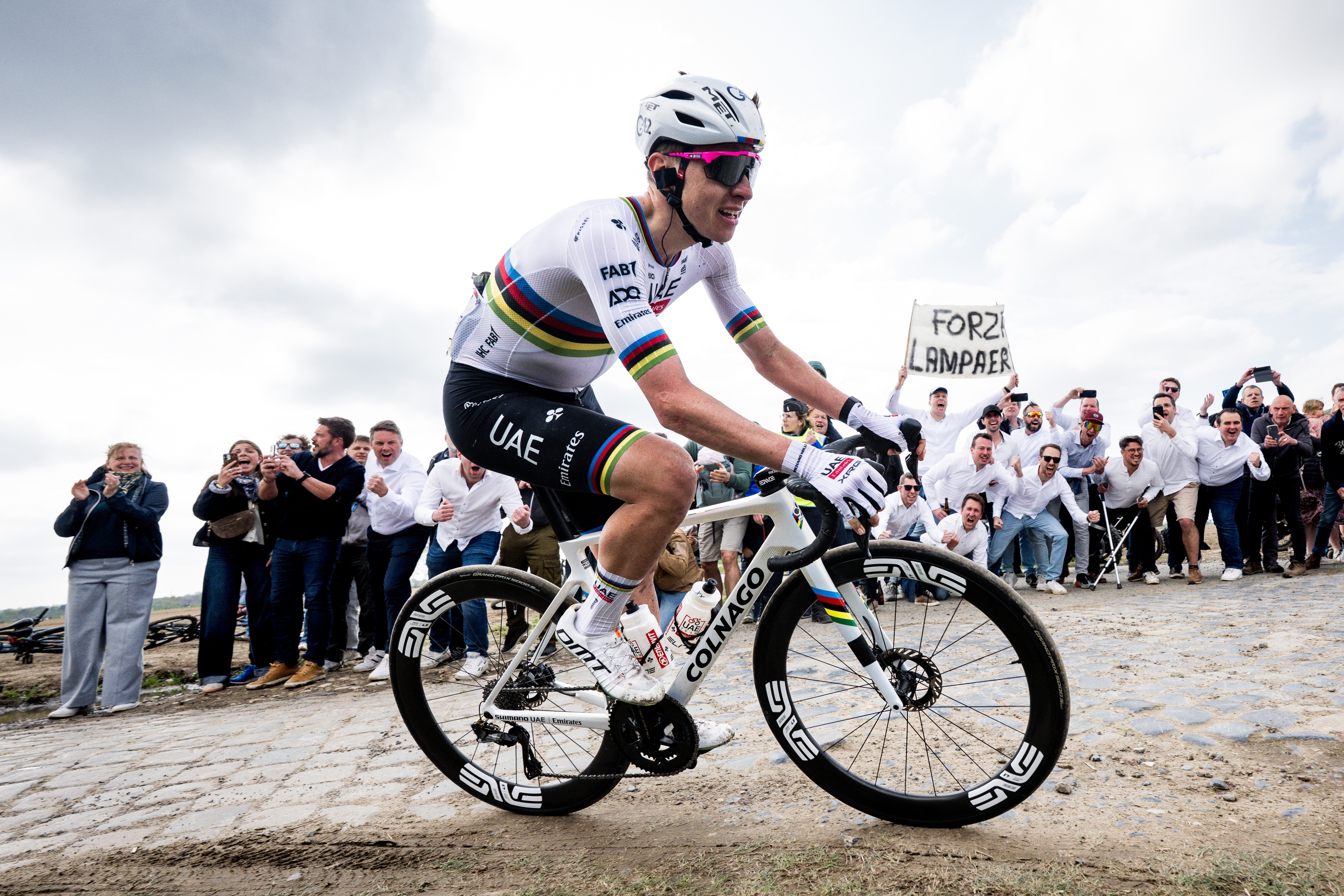 'One of the hardest races I've ever done in my life' - Tadej Pogačar finishes runner-up on Paris-Roubaix debut after crash
'One of the hardest races I've ever done in my life' - Tadej Pogačar finishes runner-up on Paris-Roubaix debut after crashWorld champion reacts to 'extremely hard' battle with Mathieu van der Poel
By Tom Davidson Published